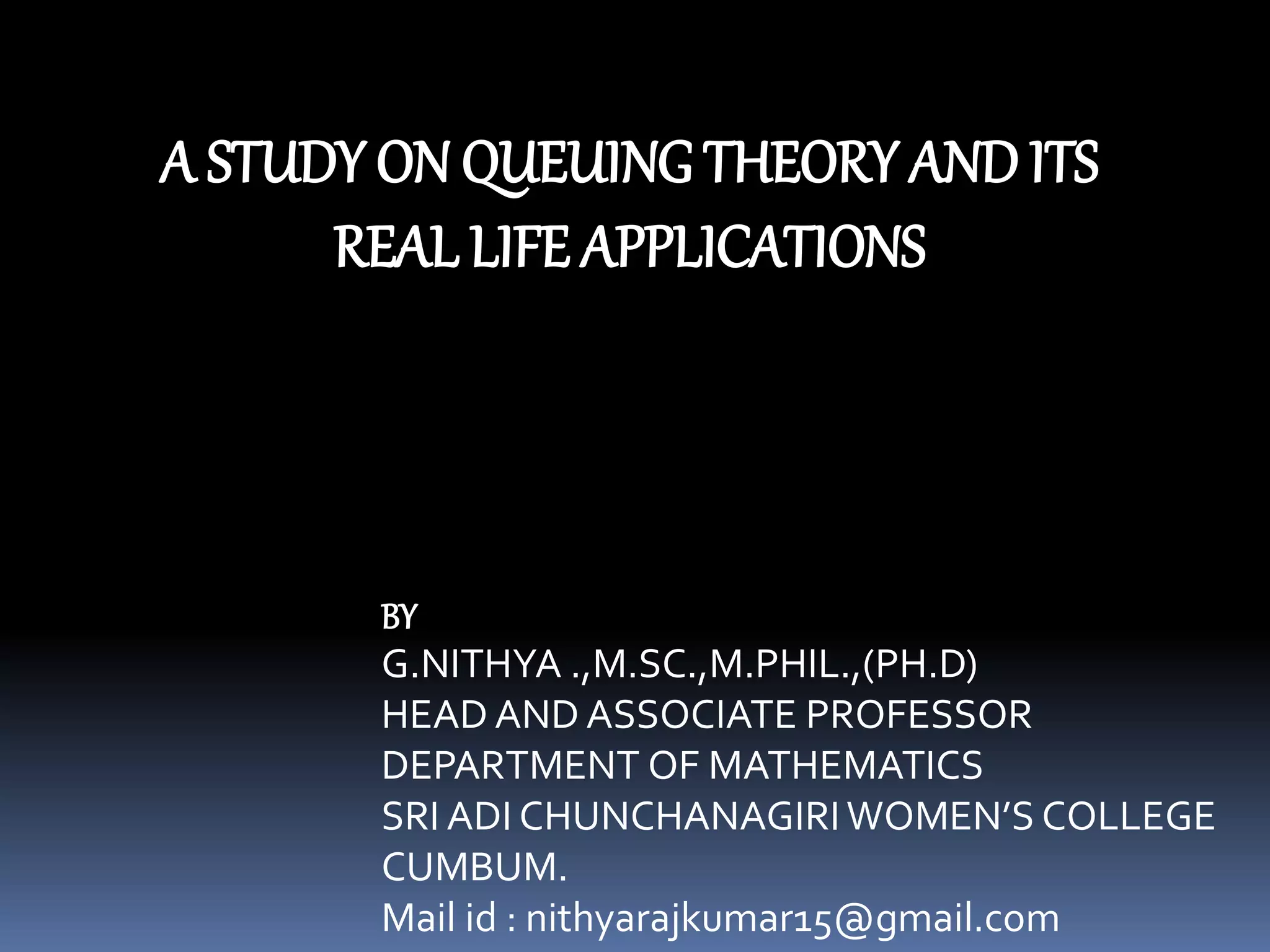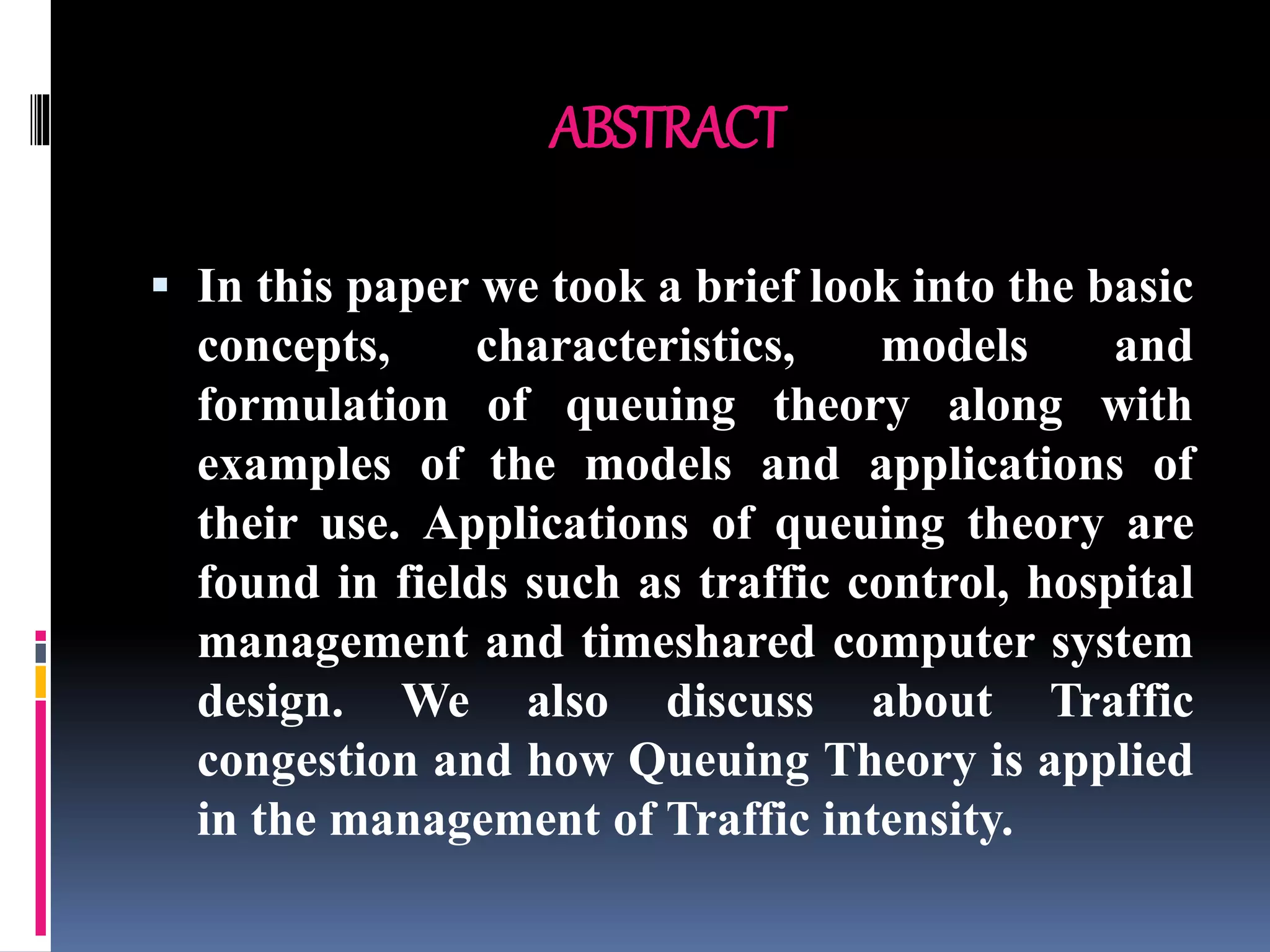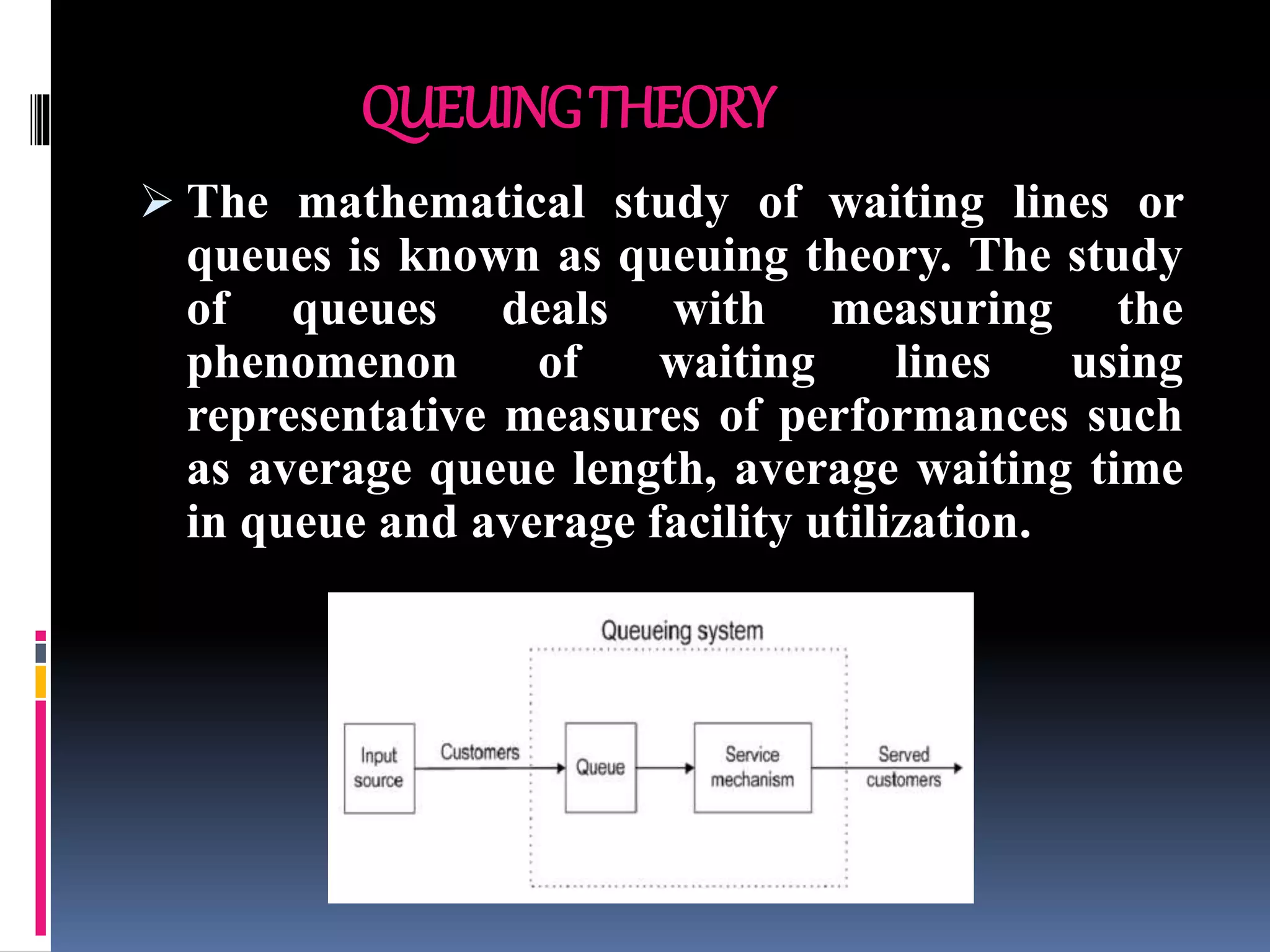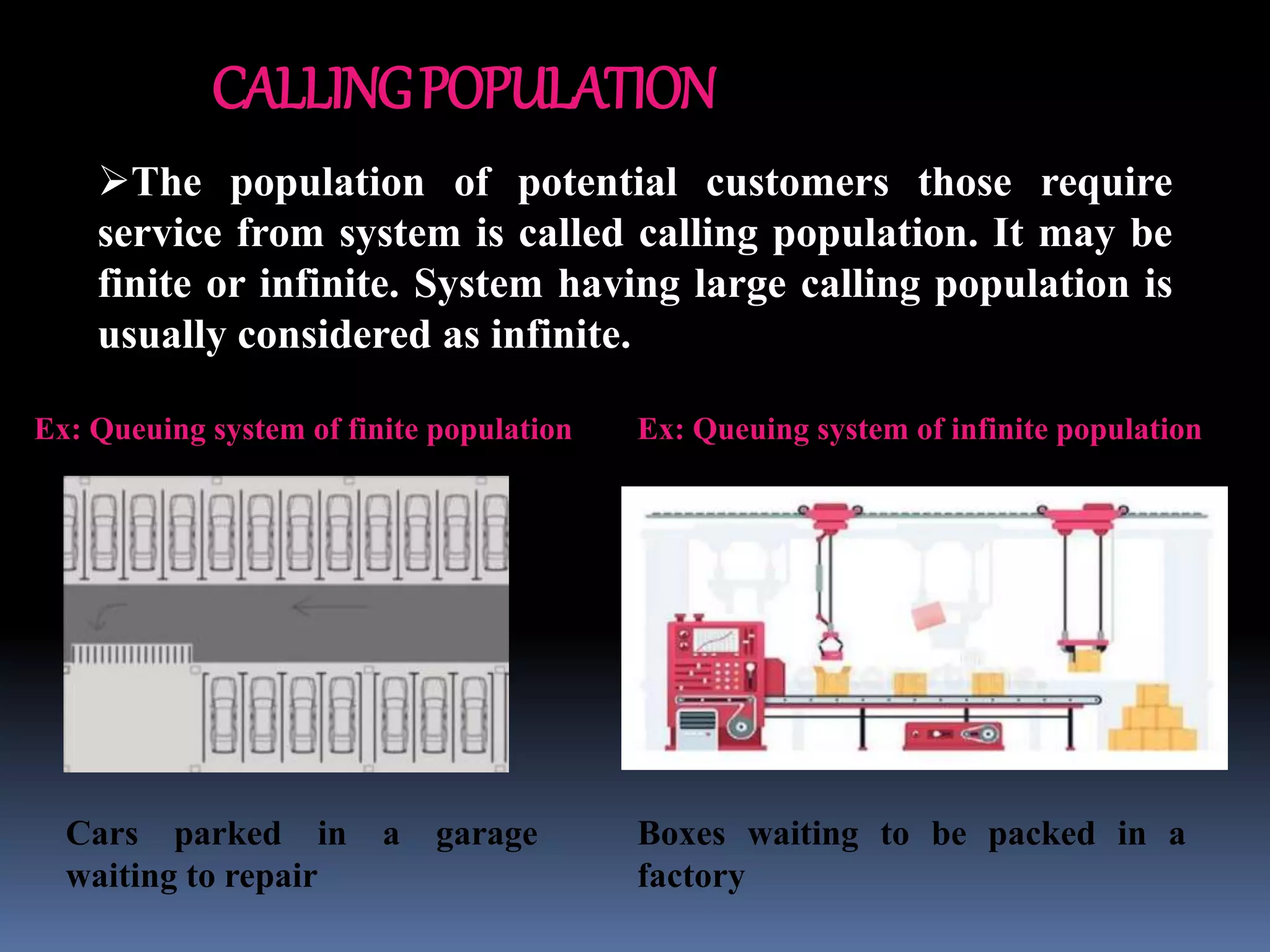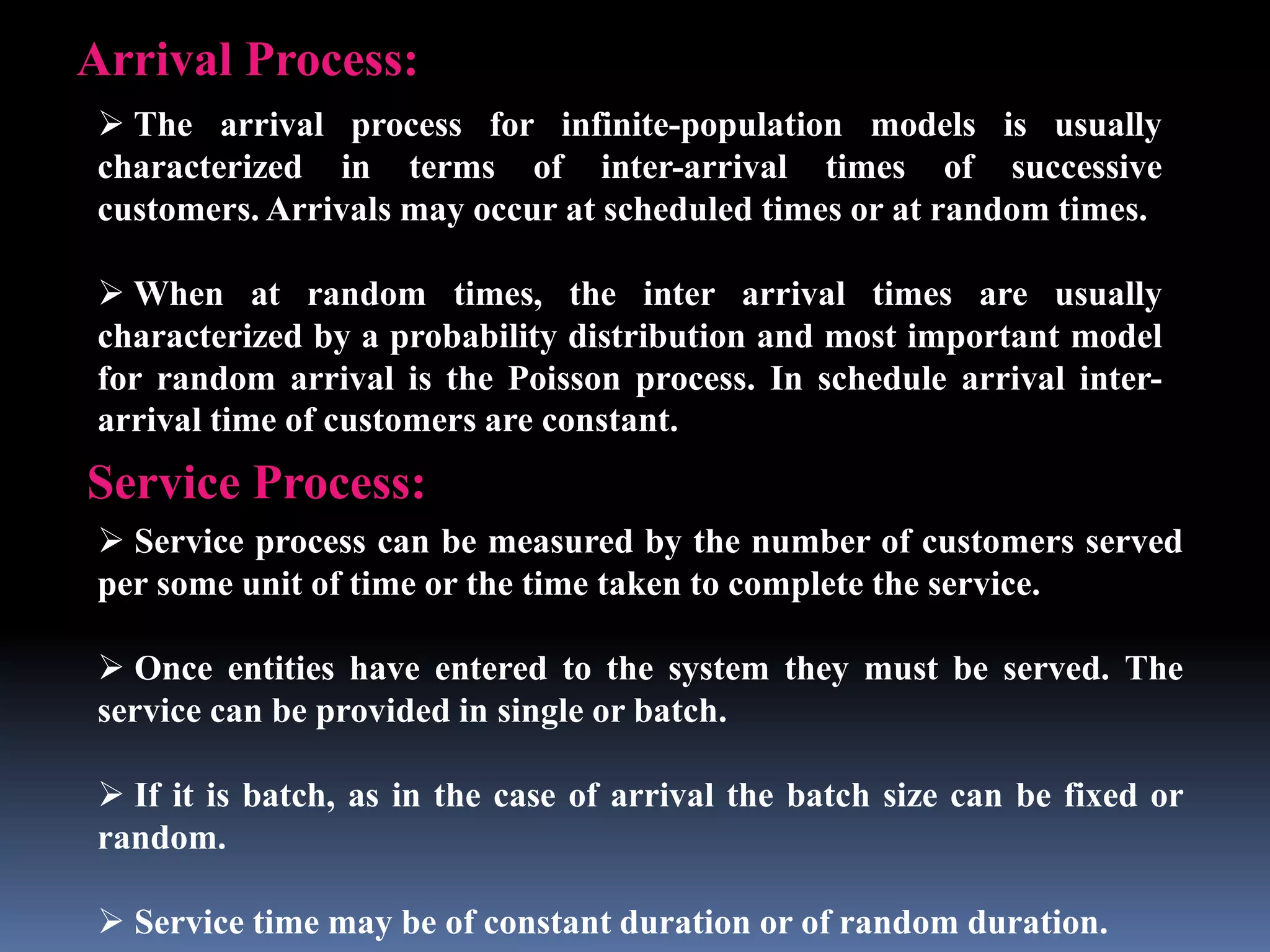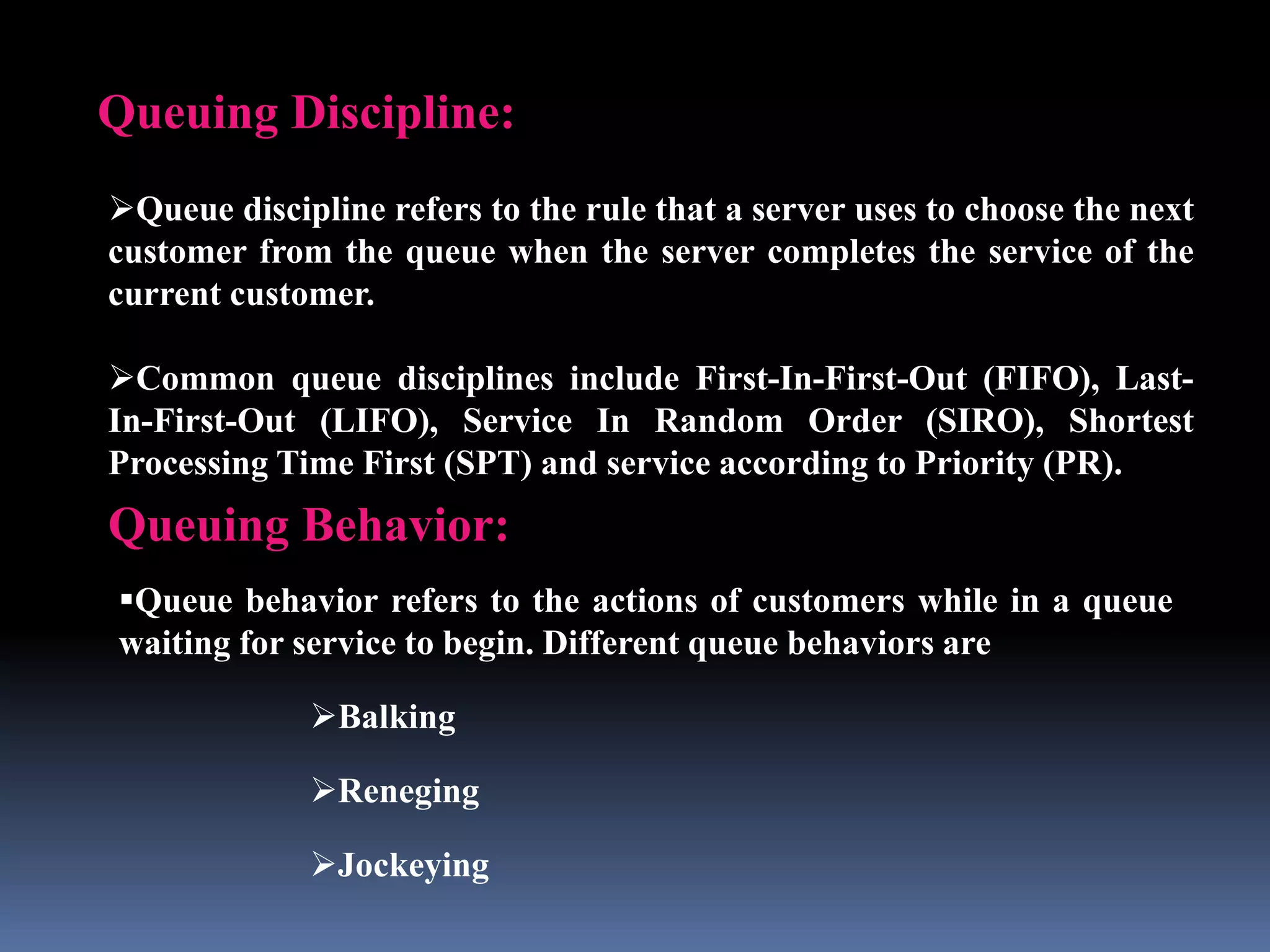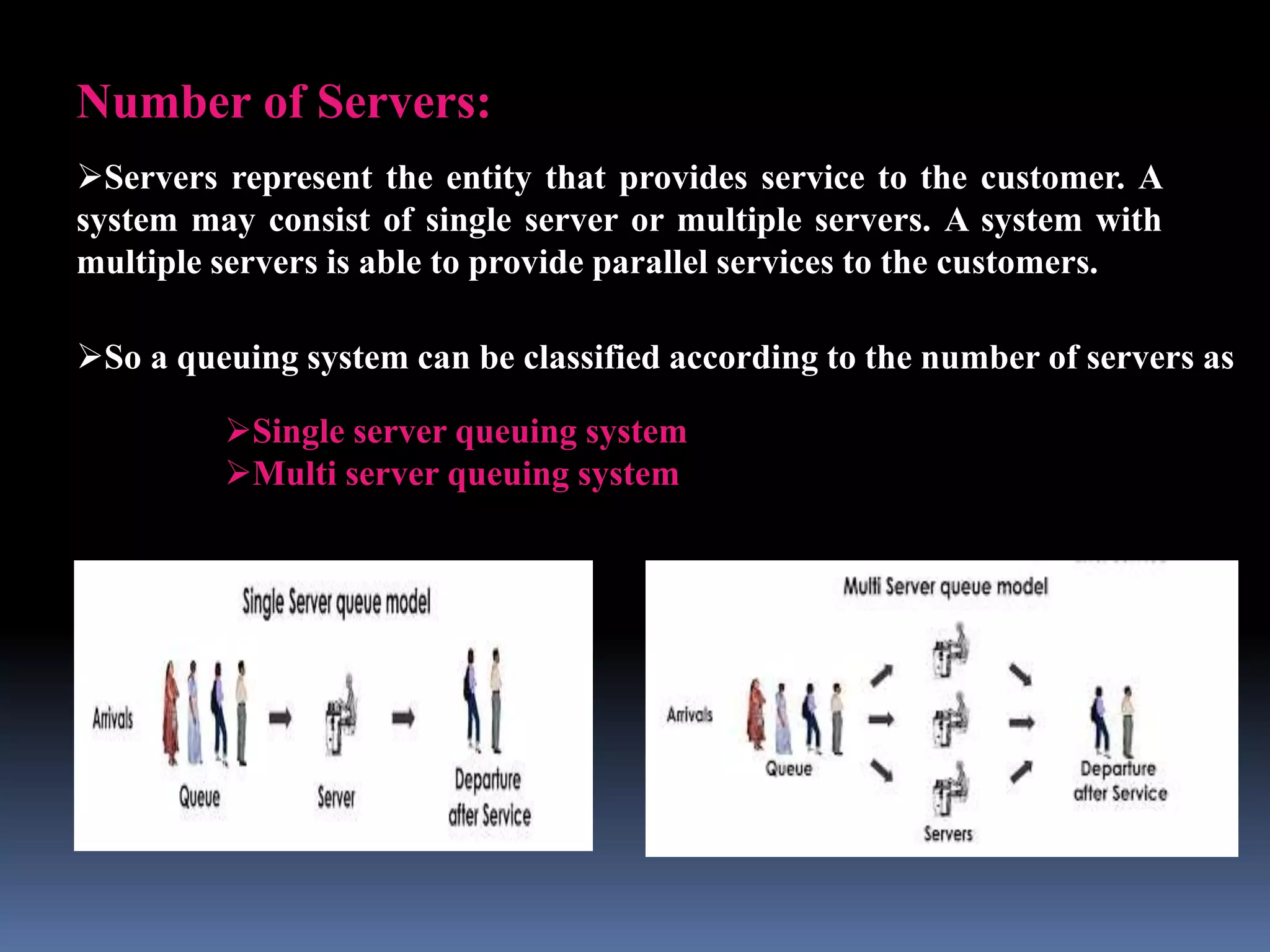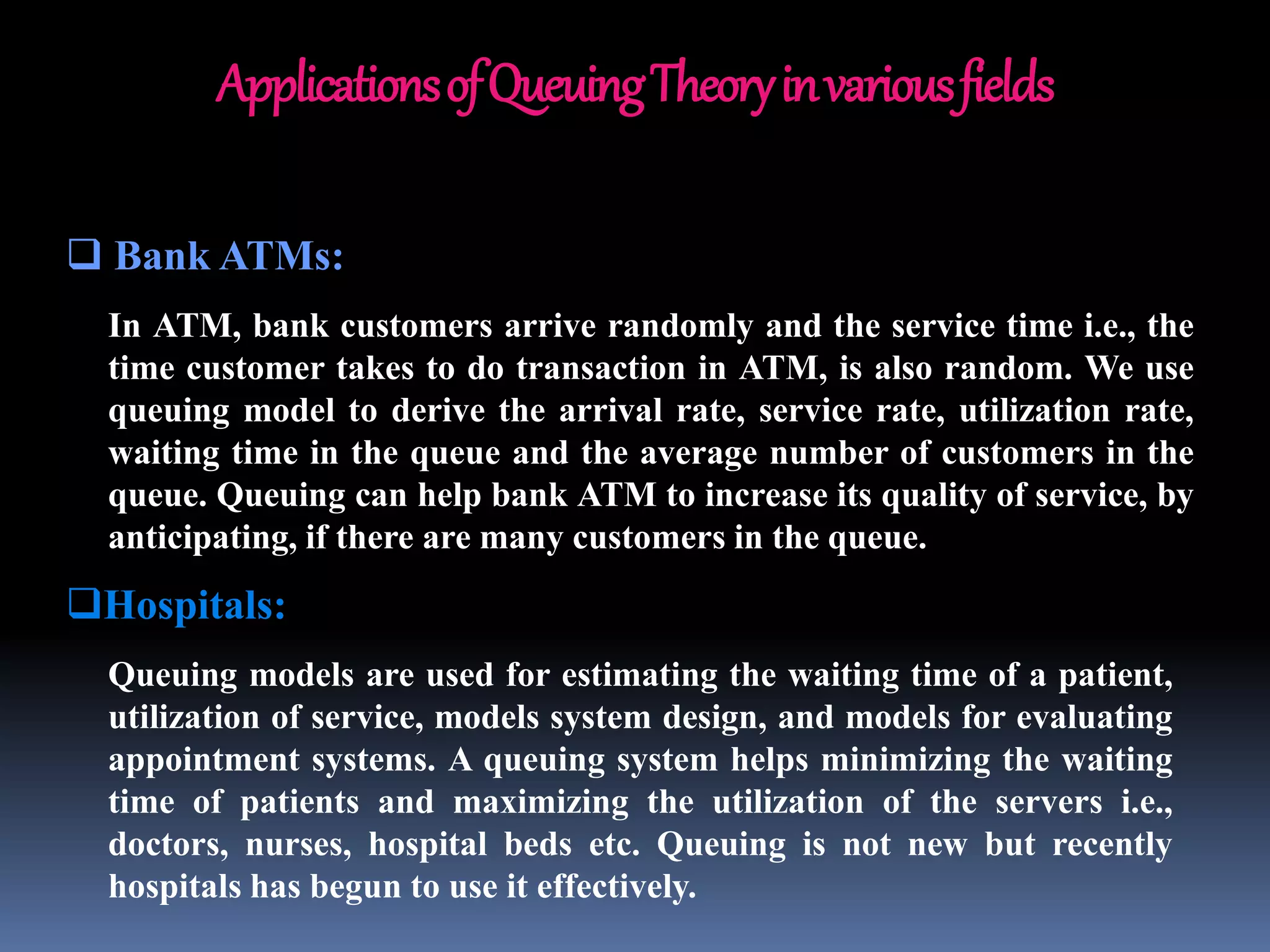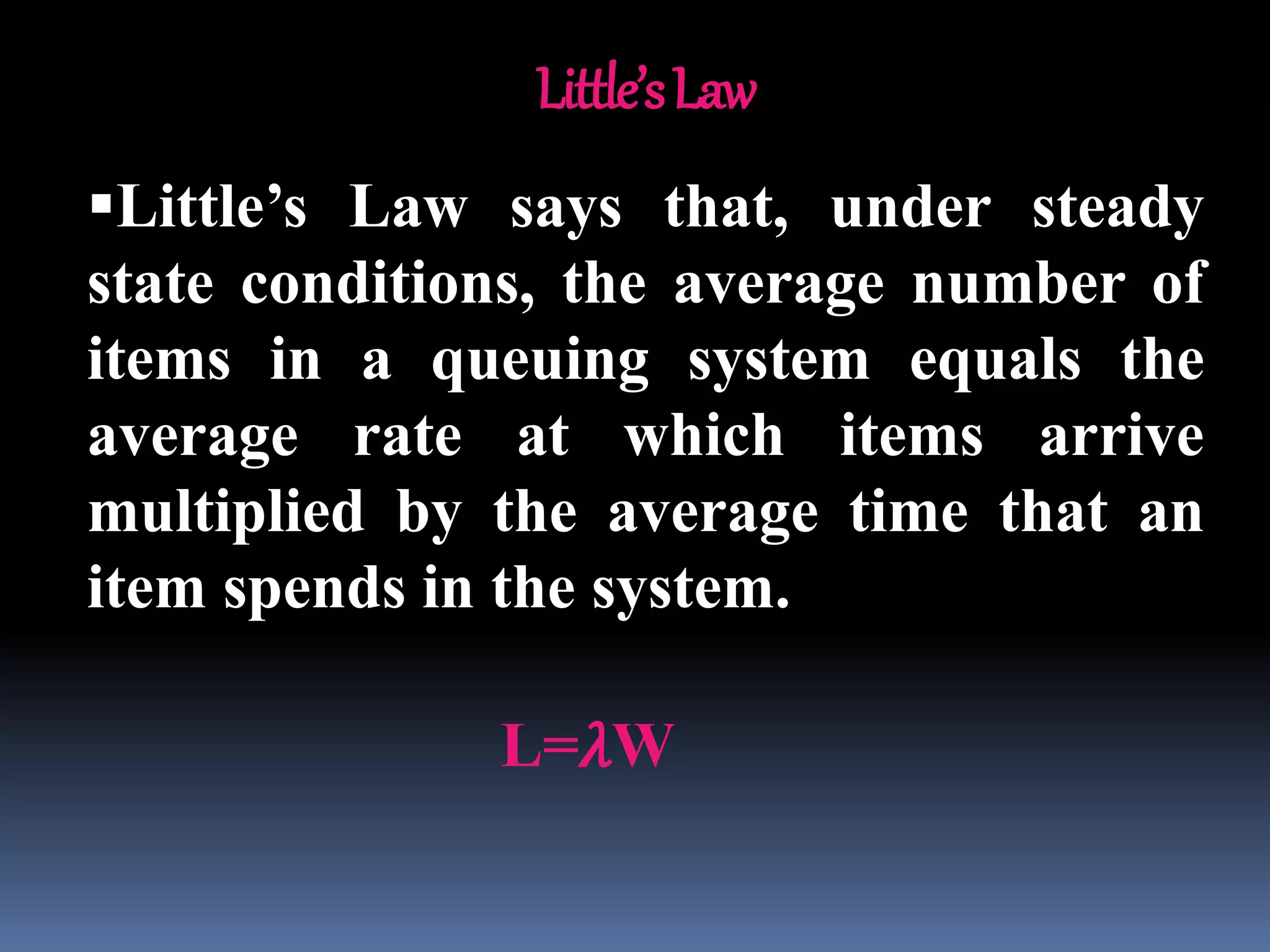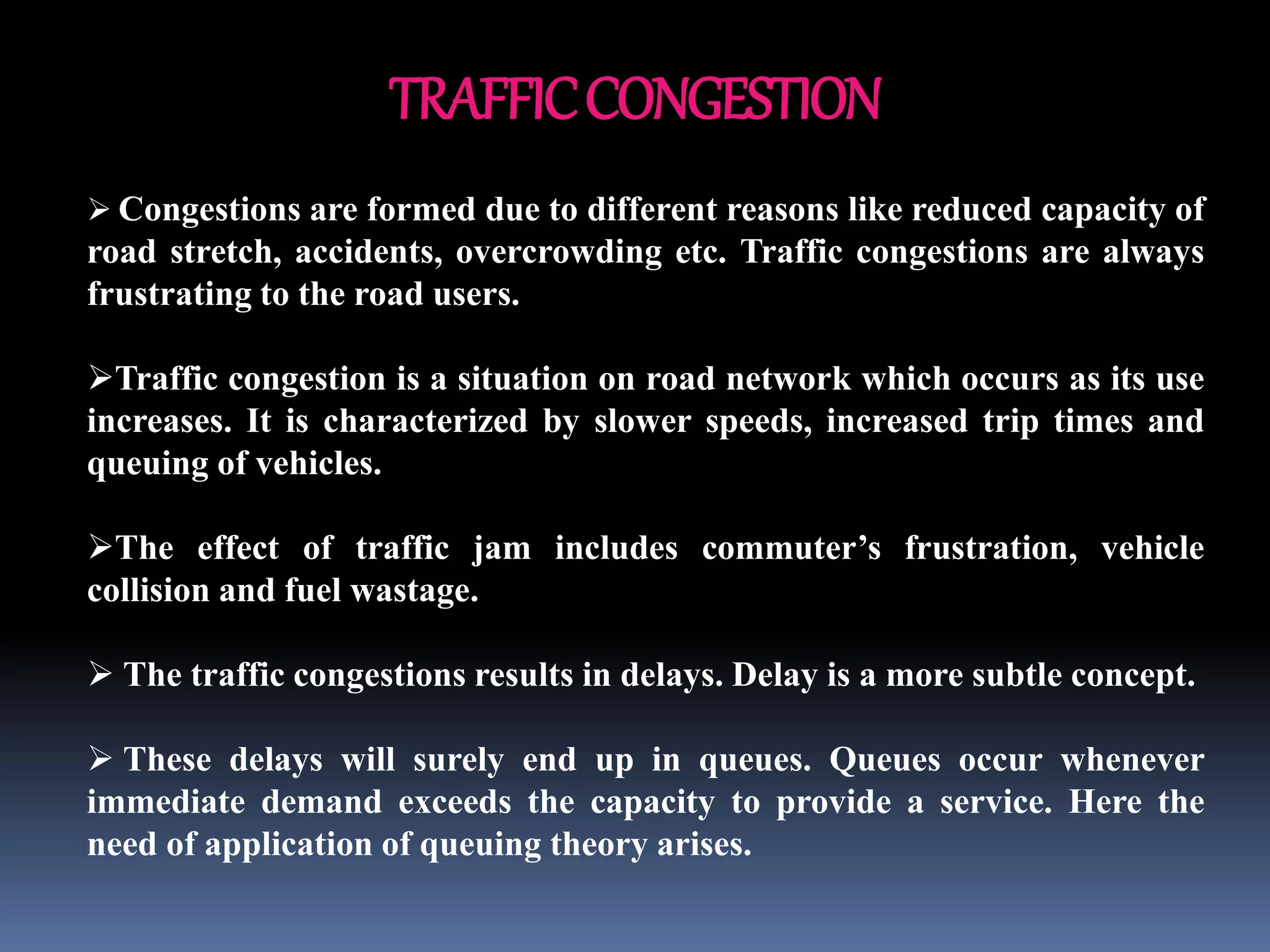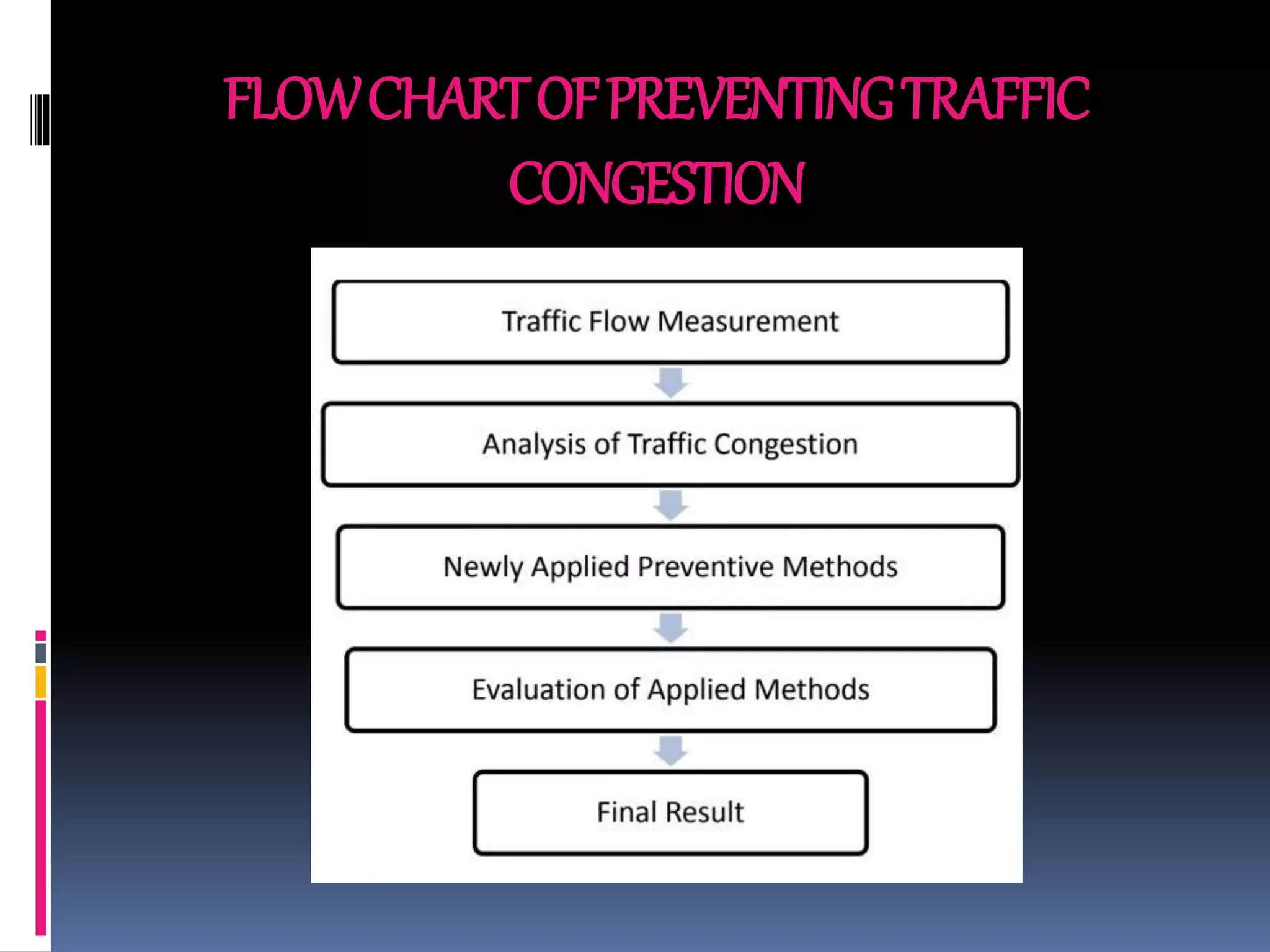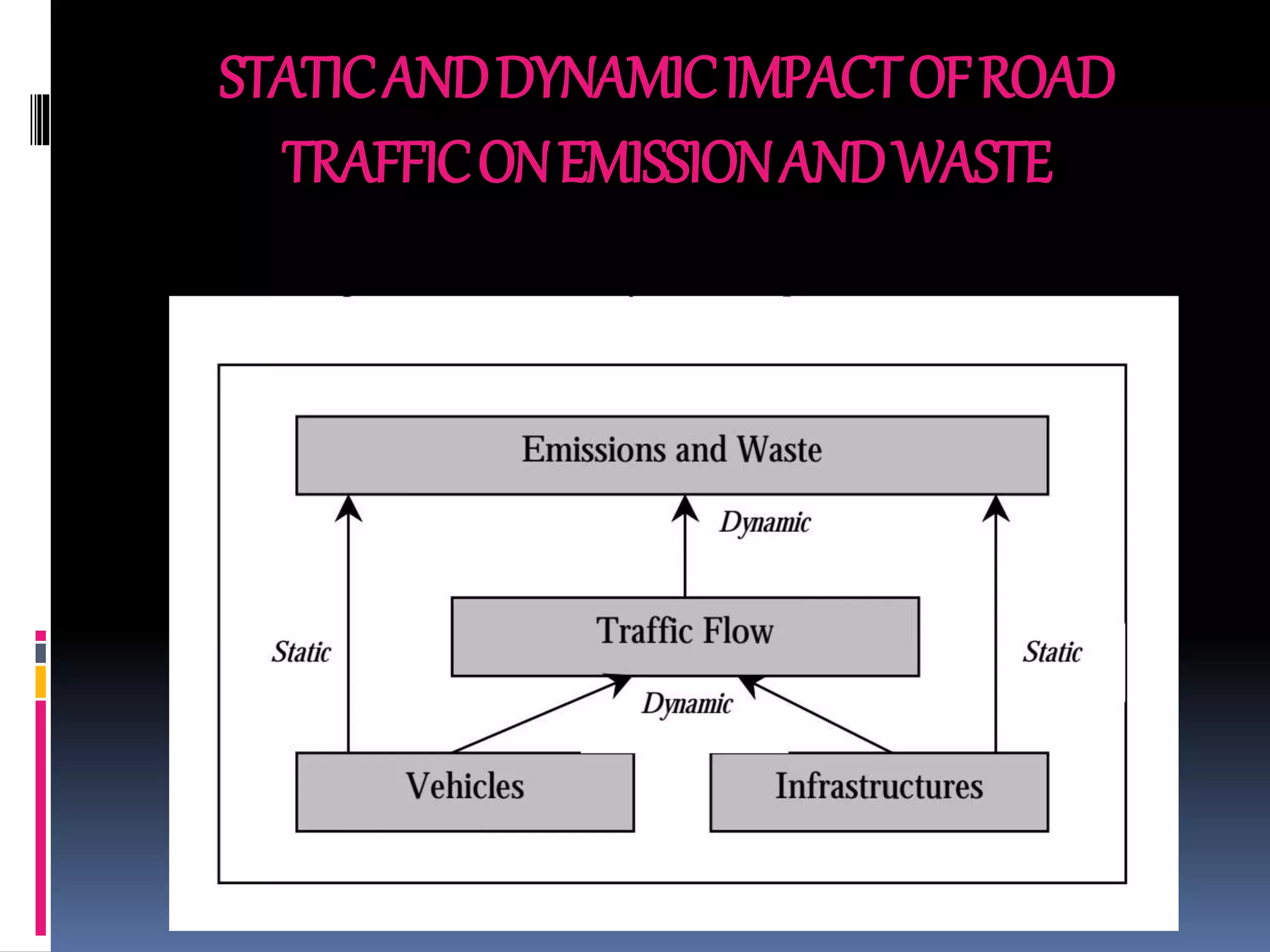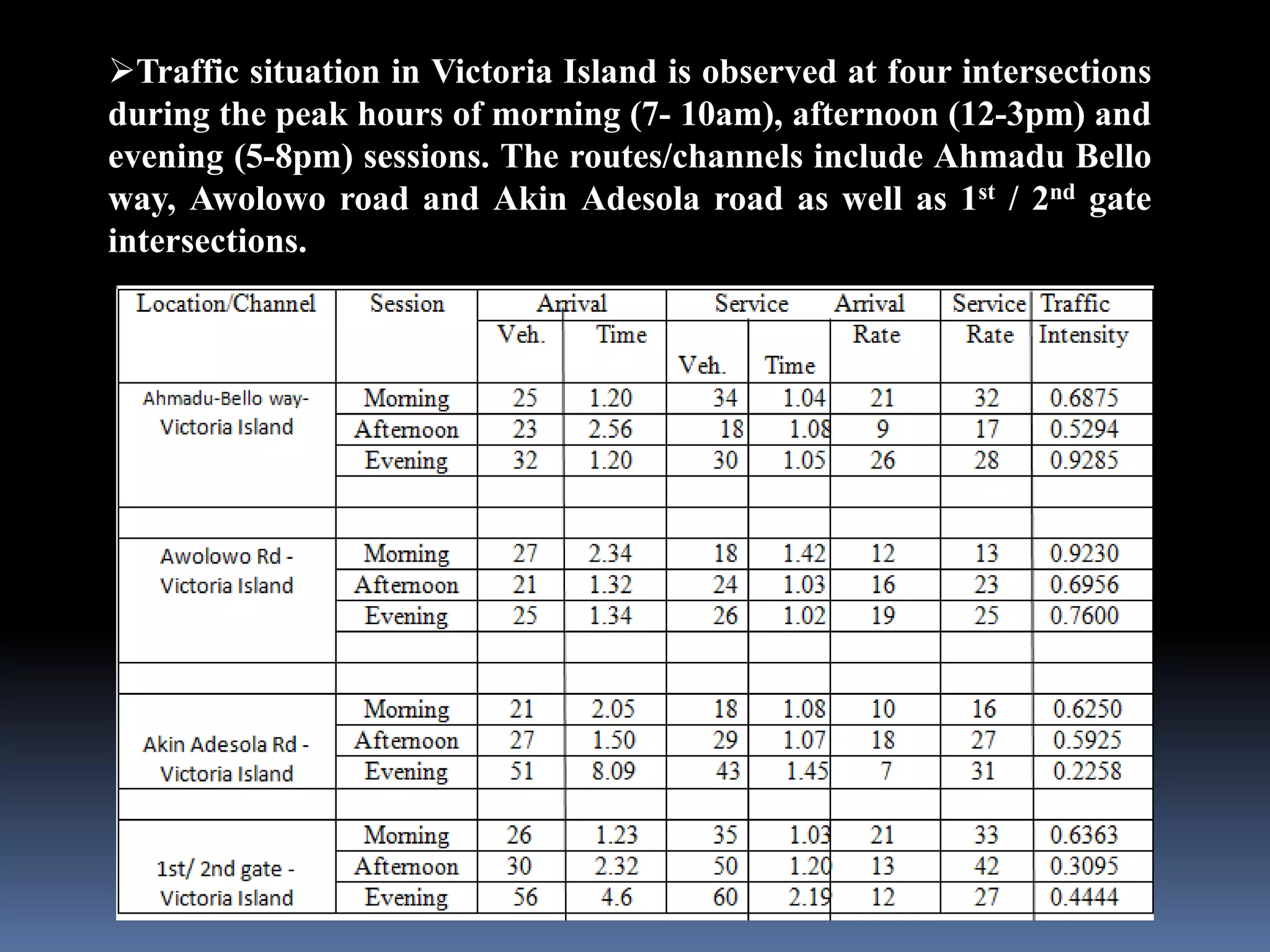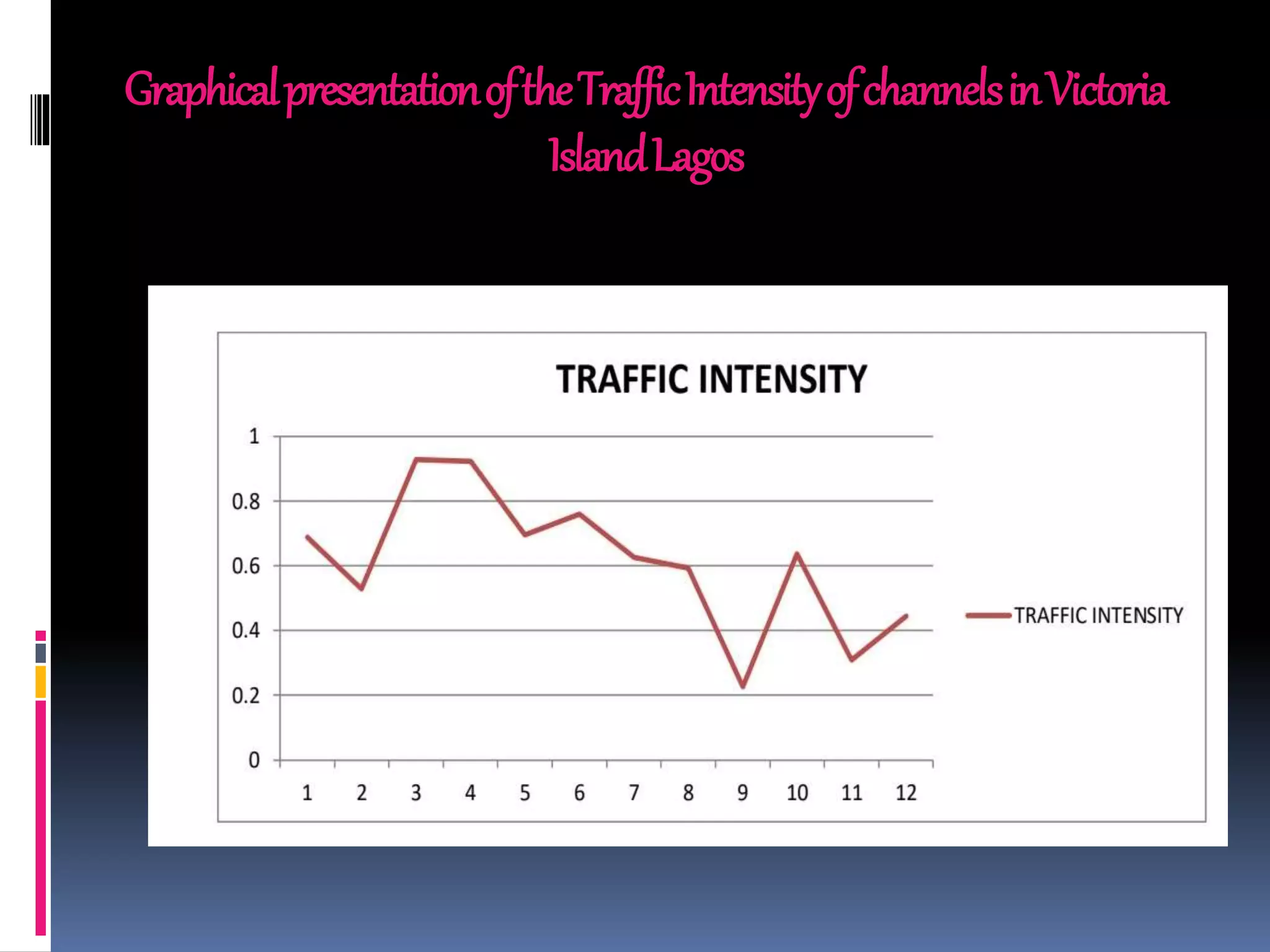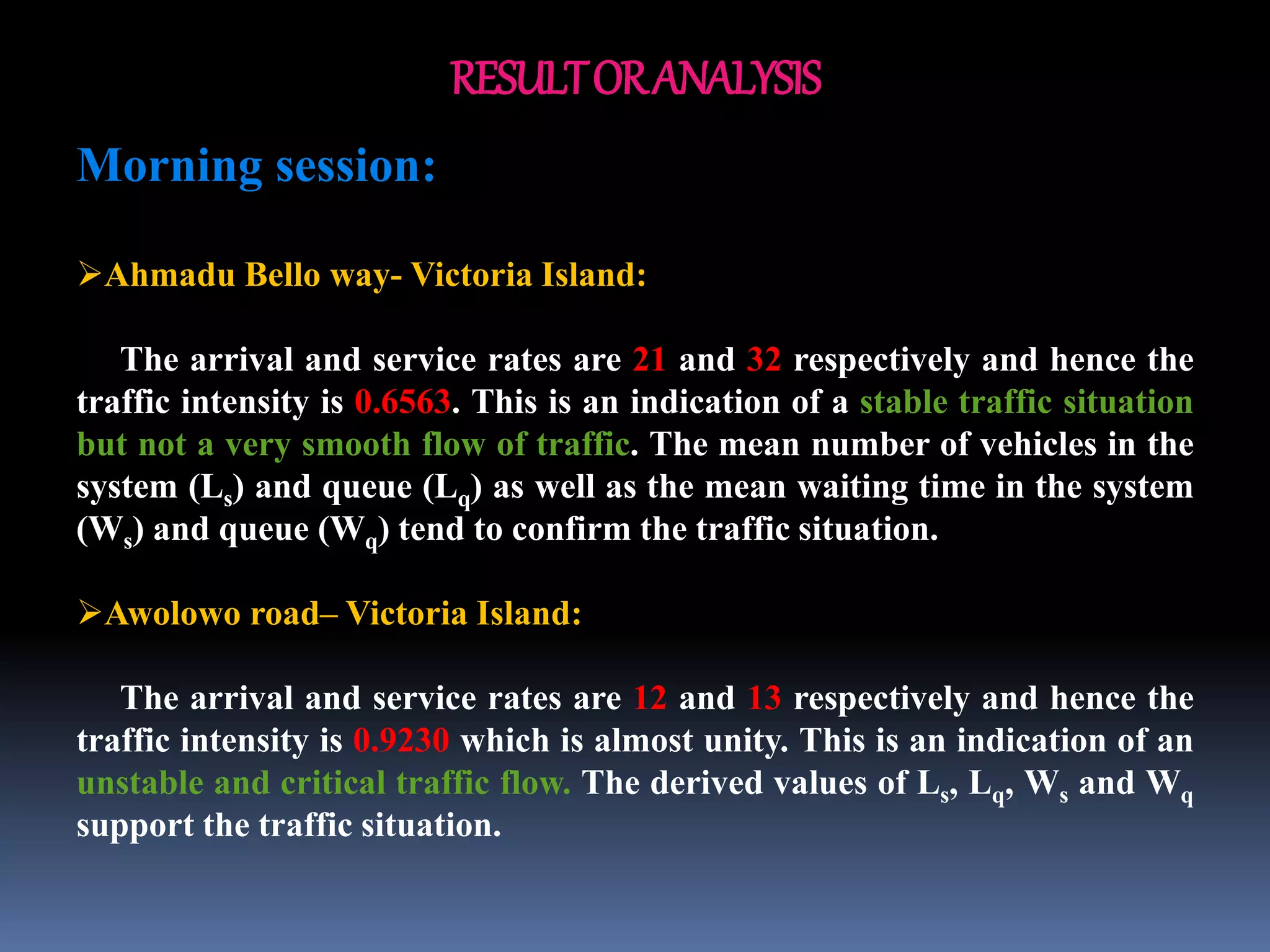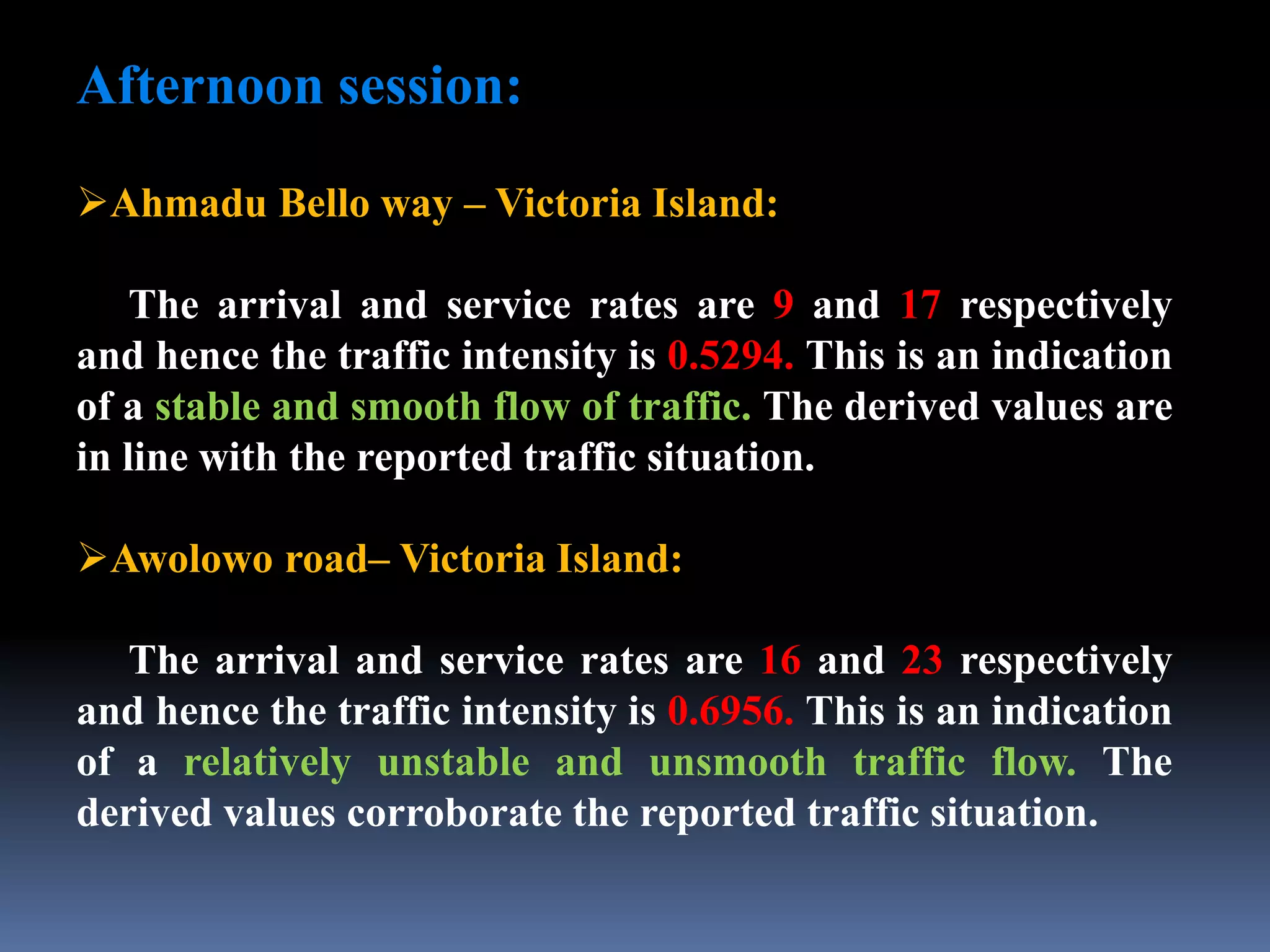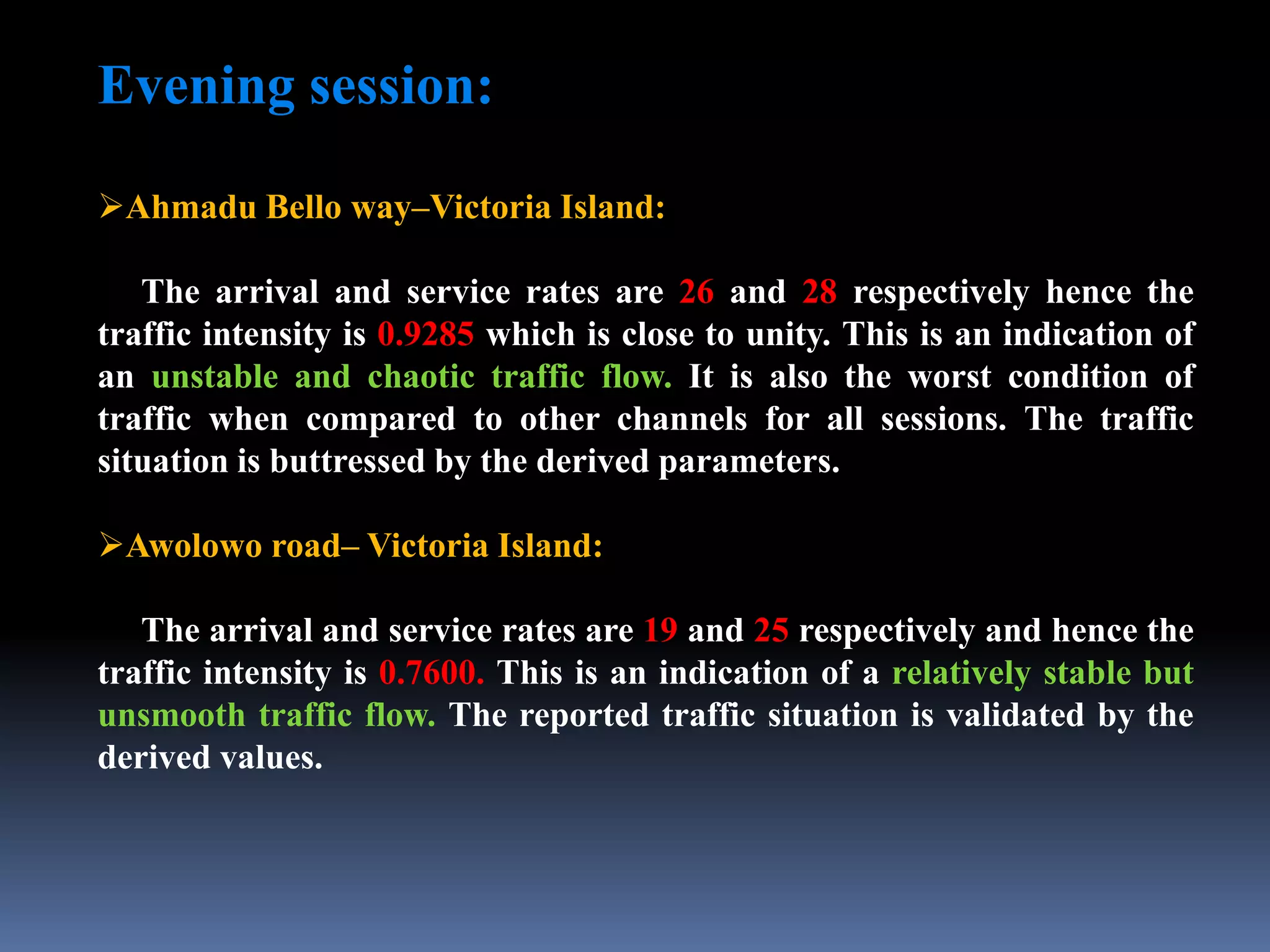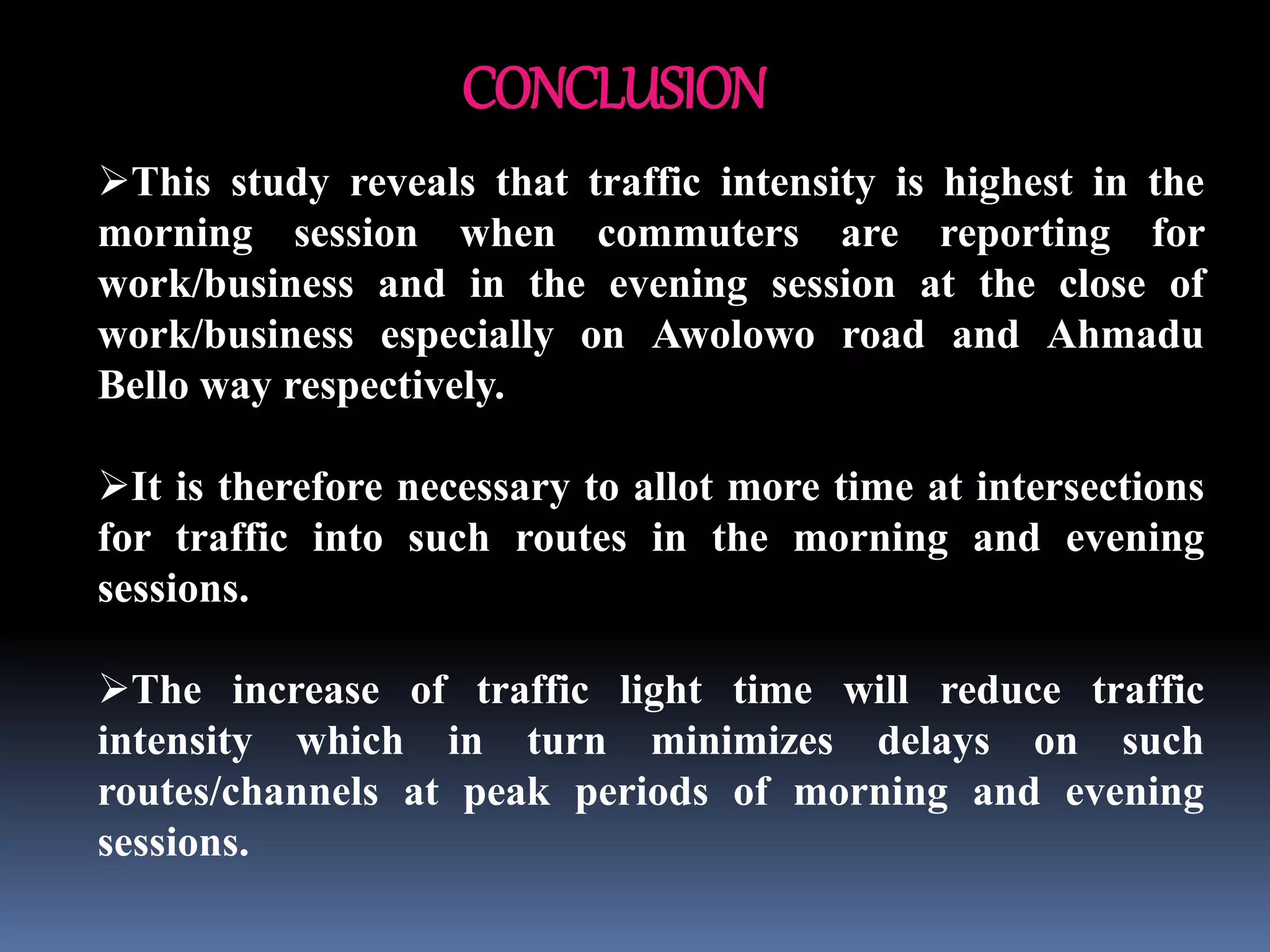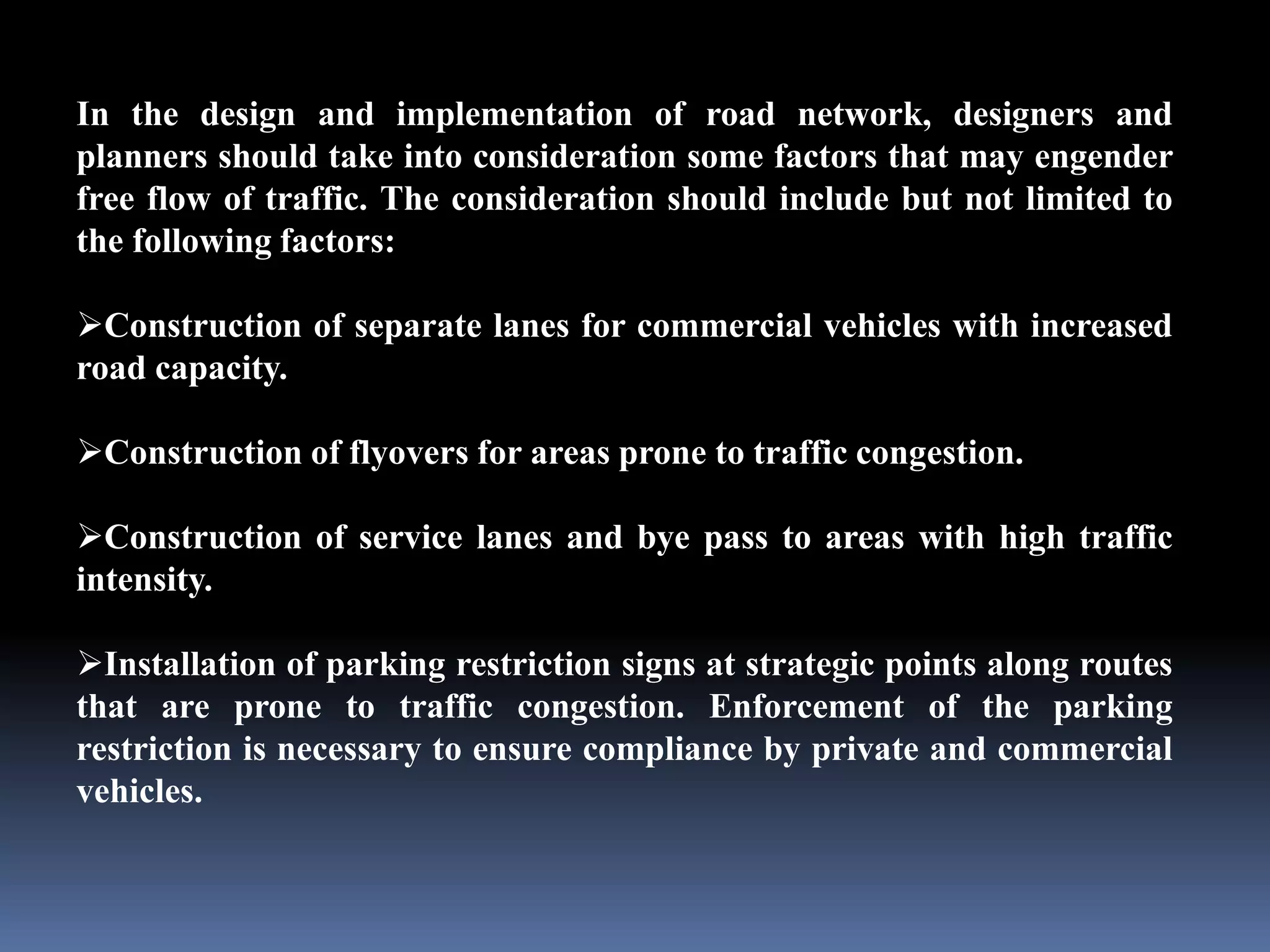This document discusses the application of queuing theory to traffic management. It presents results from a study of traffic intensity at four intersections in Victoria Island, Lagos during morning, afternoon and evening peak periods. Queuing models were used to determine arrival and service rates, from which traffic intensity was calculated. Morning and evening sessions saw the highest intensities, especially on two roads. The analysis confirms queuing theory can help minimize congestion by optimizing traffic light times during peak periods. Proper road design considering separate lanes, flyovers and parking restrictions can also help ensure smooth traffic flow.
